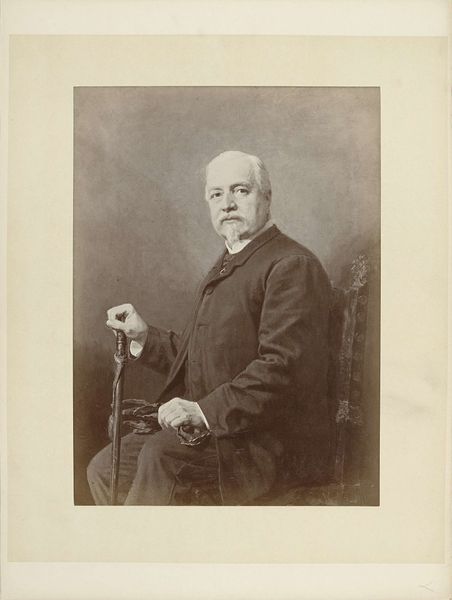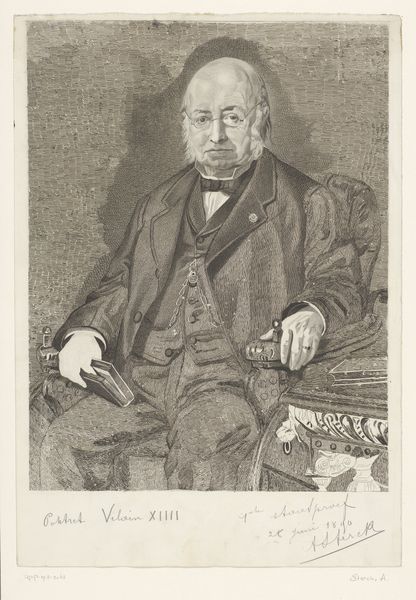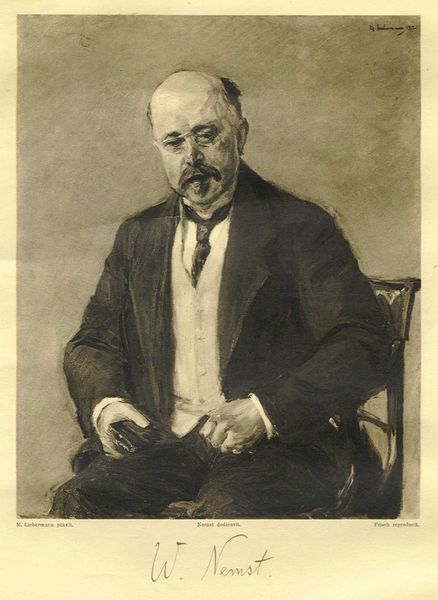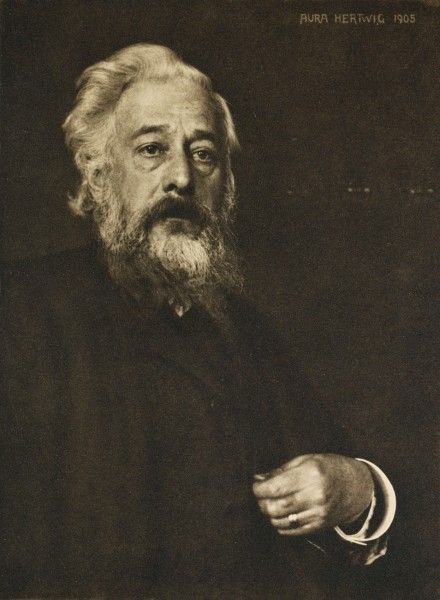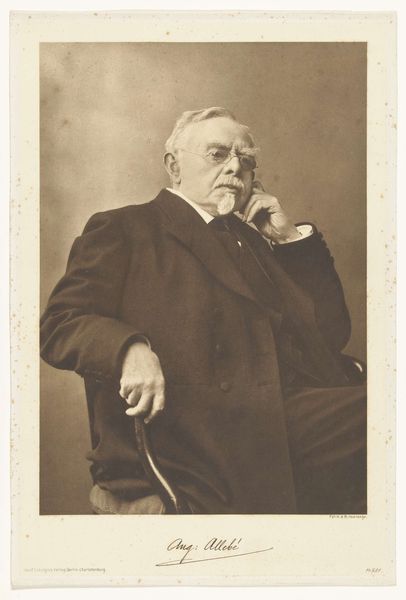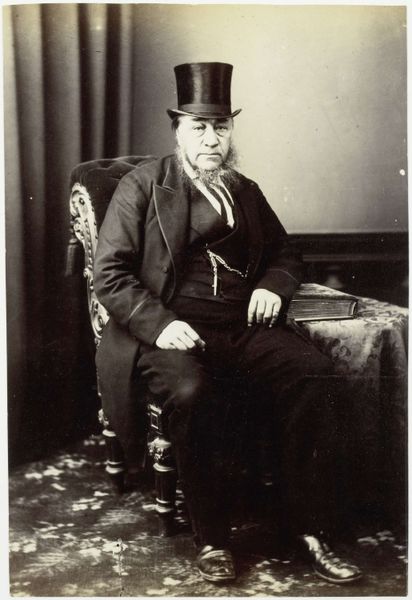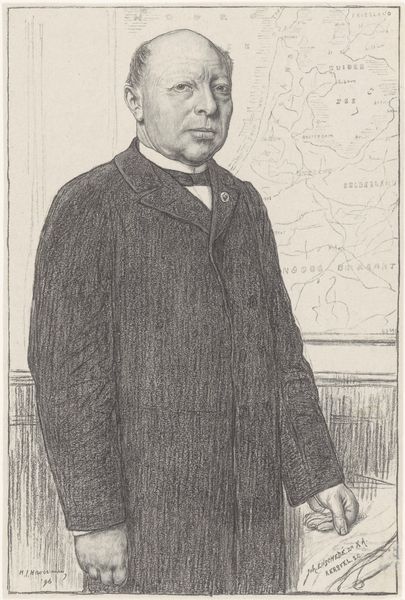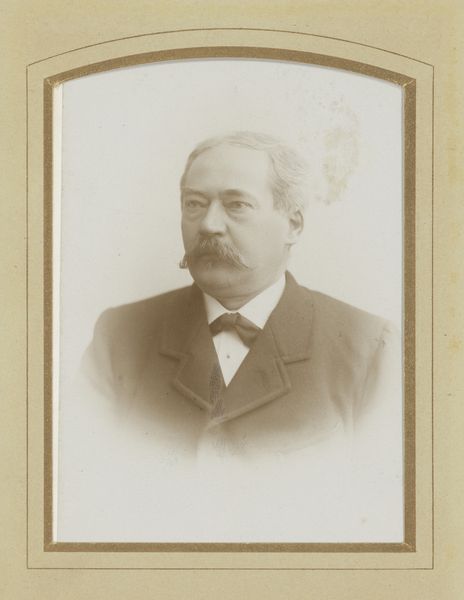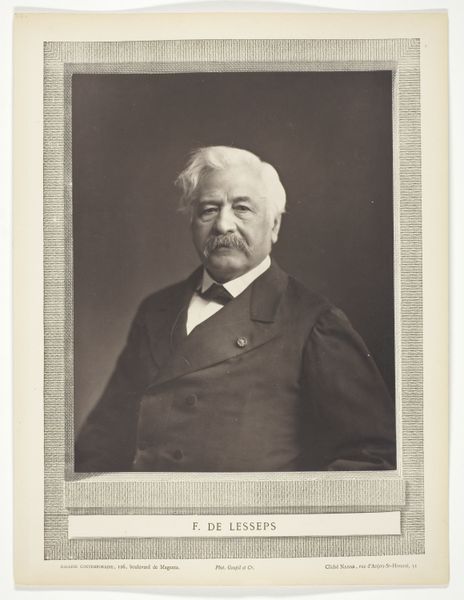
drawing, print, engraving
#
portrait
#
drawing
# print
#
19th century
#
engraving
#
realism
Dimensions: Sheet: 20 9/16 × 13 13/16 in. (52.2 × 35.1 cm) Plate: 19 5/16 × 12 1/4 in. (49 × 31.1 cm)
Copyright: Public Domain
Curator: Well, the subject here is a man portrayed in engraving, simply titled, *Portrait of Ferdinand Lesseps*, dating from the years 1850 to 1914. It is currently held here at The Metropolitan Museum of Art. Editor: My immediate impression is one of gravitas and muted opulence. The sitter appears quite relaxed, even with all the formal decor. I am quite struck by the rendering of textures, and by the play of light, so delicate for an engraving. Curator: Absolutely. We're seeing a meticulous reproduction here, not just of form but also of social standing. Observe the man’s clothing, a bourgeois jacket, how the lines emphasize its crafted tailoring. Everything signals production value, even the domestic objects in the scene seem like signs of successful acquisition. Editor: Speaking of setting, it certainly serves as a status marker, doesn't it? Look at the ornate fireplace, and the careful arrangement of objects behind him—this tells us much about how he wished to be perceived in society and also signals us to who was consuming these images and imagining this lifestyle. Curator: The way an engraving like this circulates within 19th-century print culture—as a commodity—shapes meaning. This image solidifies not just a personal likeness, but also ideas around work ethic and consumption. He's got his hand possessively near a marble mantelpiece! Editor: It really emphasizes the power of images. What a way to preserve one’s legacy and propagate it for public consumption and remembrance. These portraits are crucial records, but, of course, carefully cultivated ones. The placement within the Met enhances the historic role these portraits continue to play. Curator: Thinking about labor intensiveness helps ground us, I think, and prevents us from just consuming the surface image without reflection. It becomes a reminder to probe at the image’s politics, embedded so carefully in the cross-hatching. Editor: Very well said. This deep dive into an image and its socio-historical moment demonstrates how artworks become artifacts that shape cultural meaning, then and now. Curator: Indeed. Let us consider then what materials construct, and how.
Comments
No comments
Be the first to comment and join the conversation on the ultimate creative platform.


